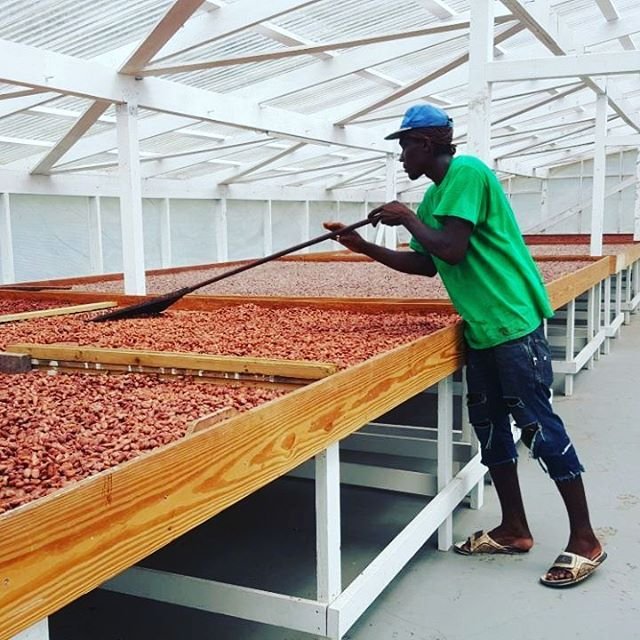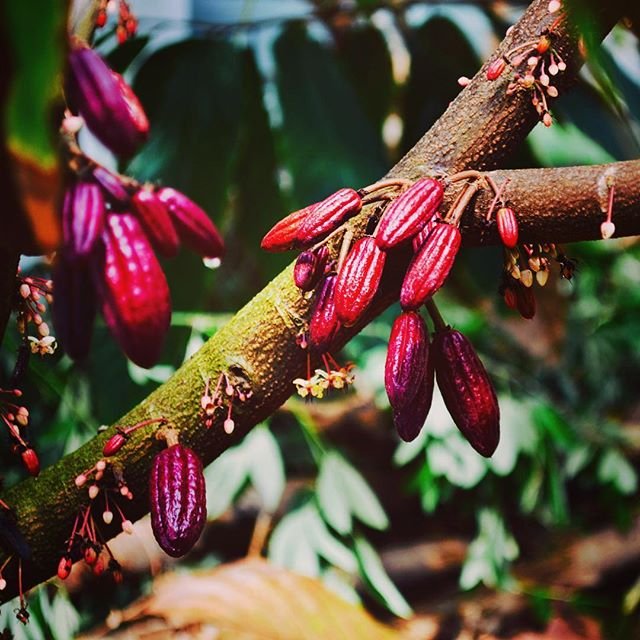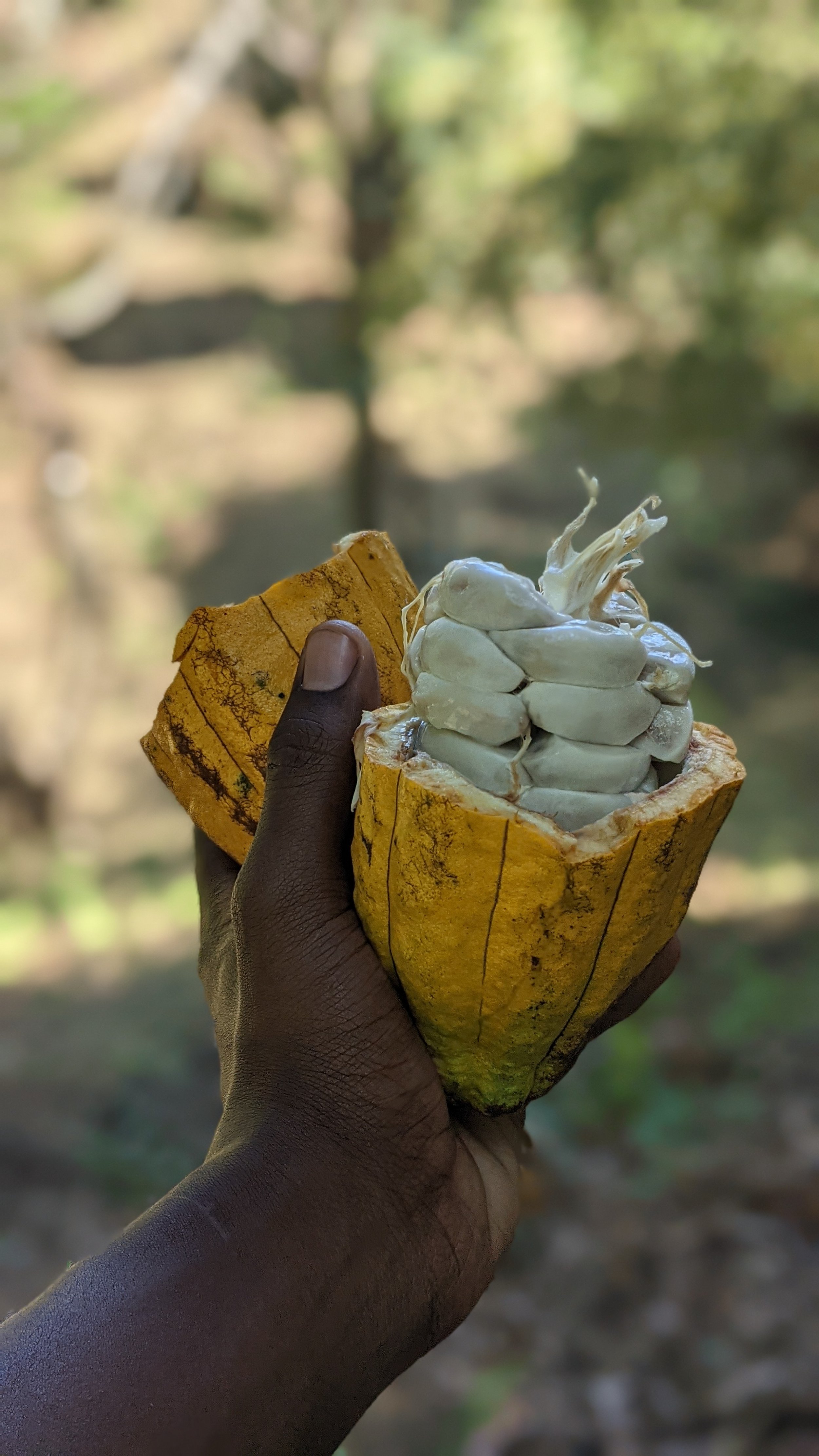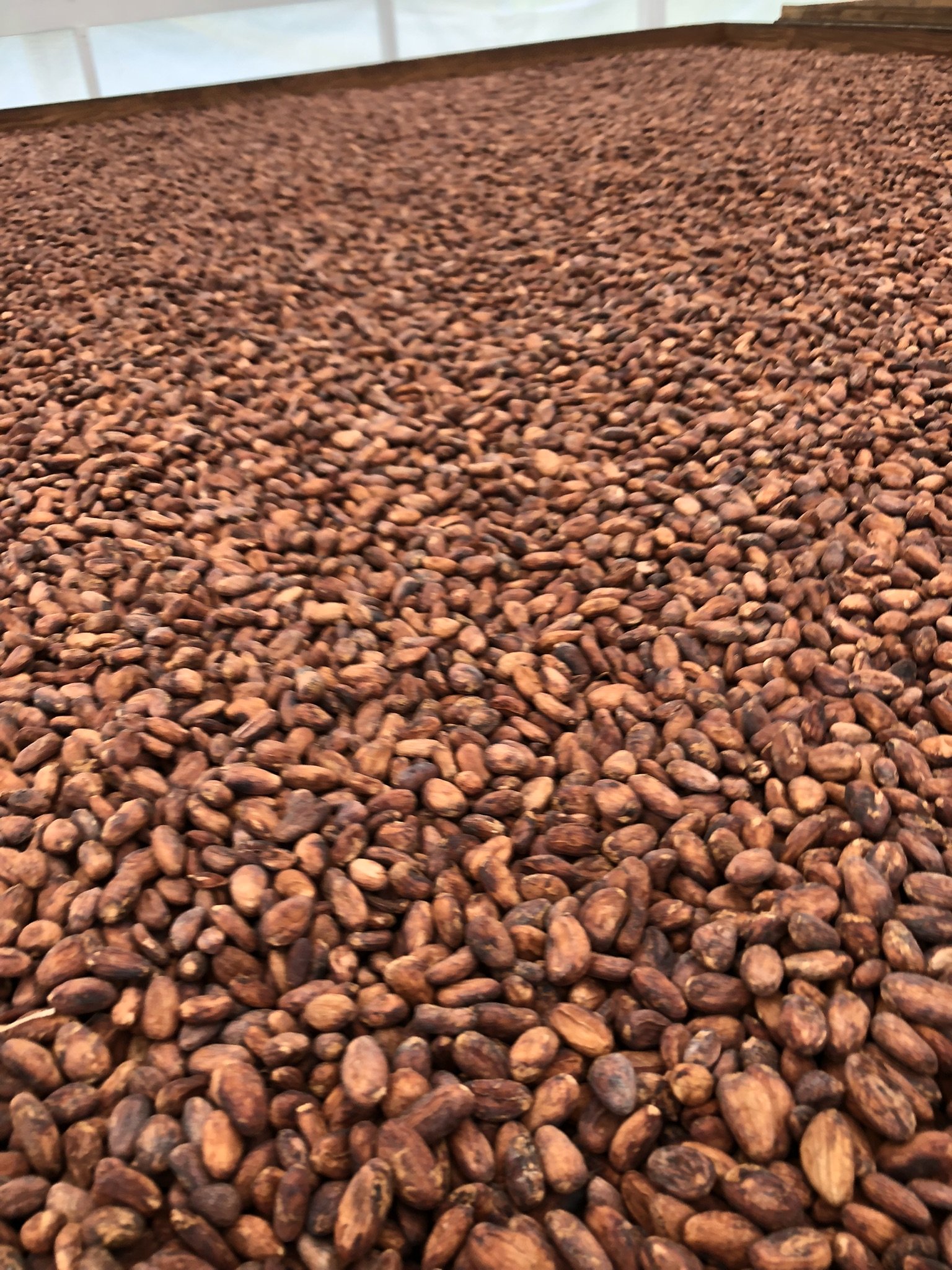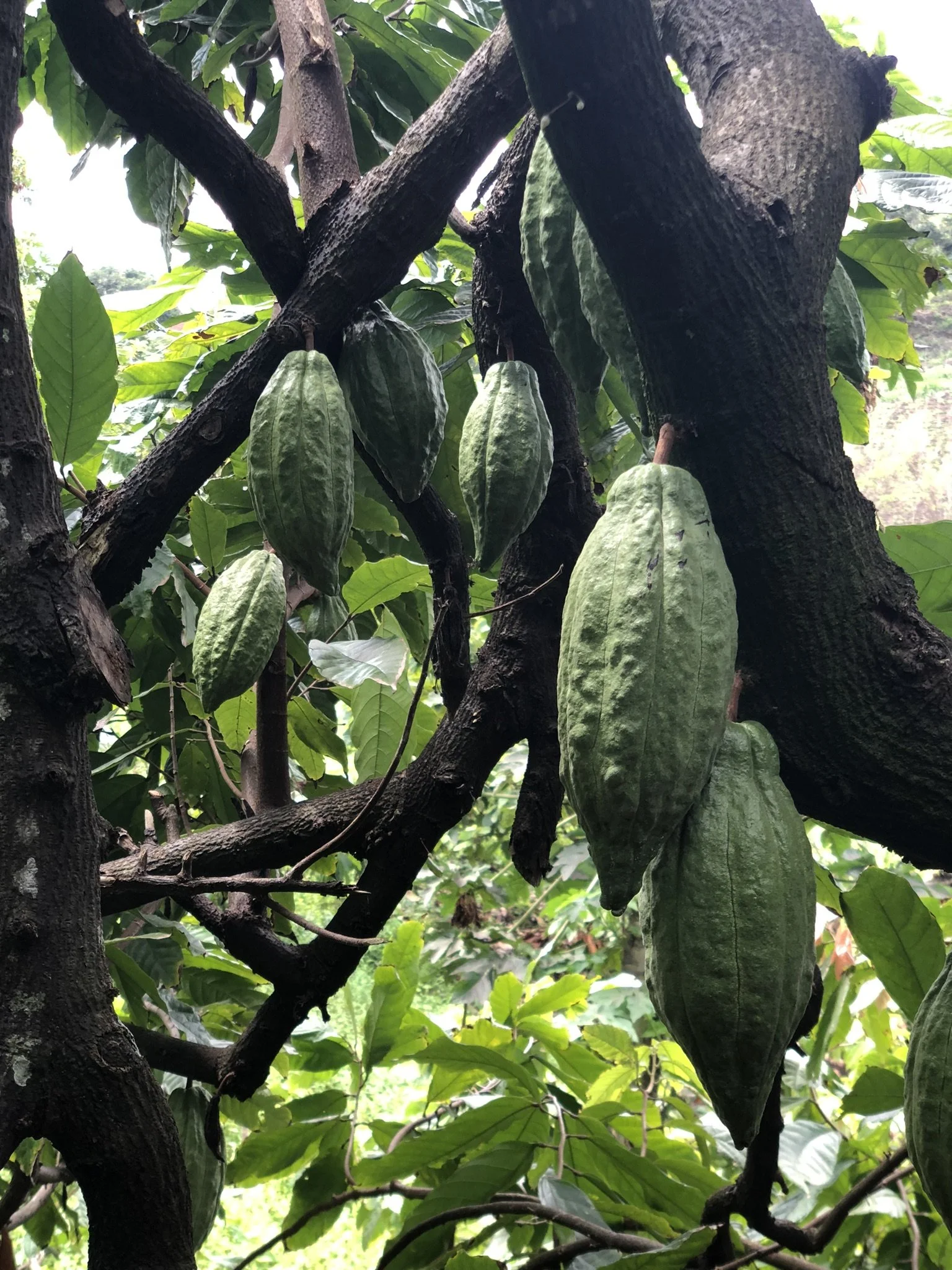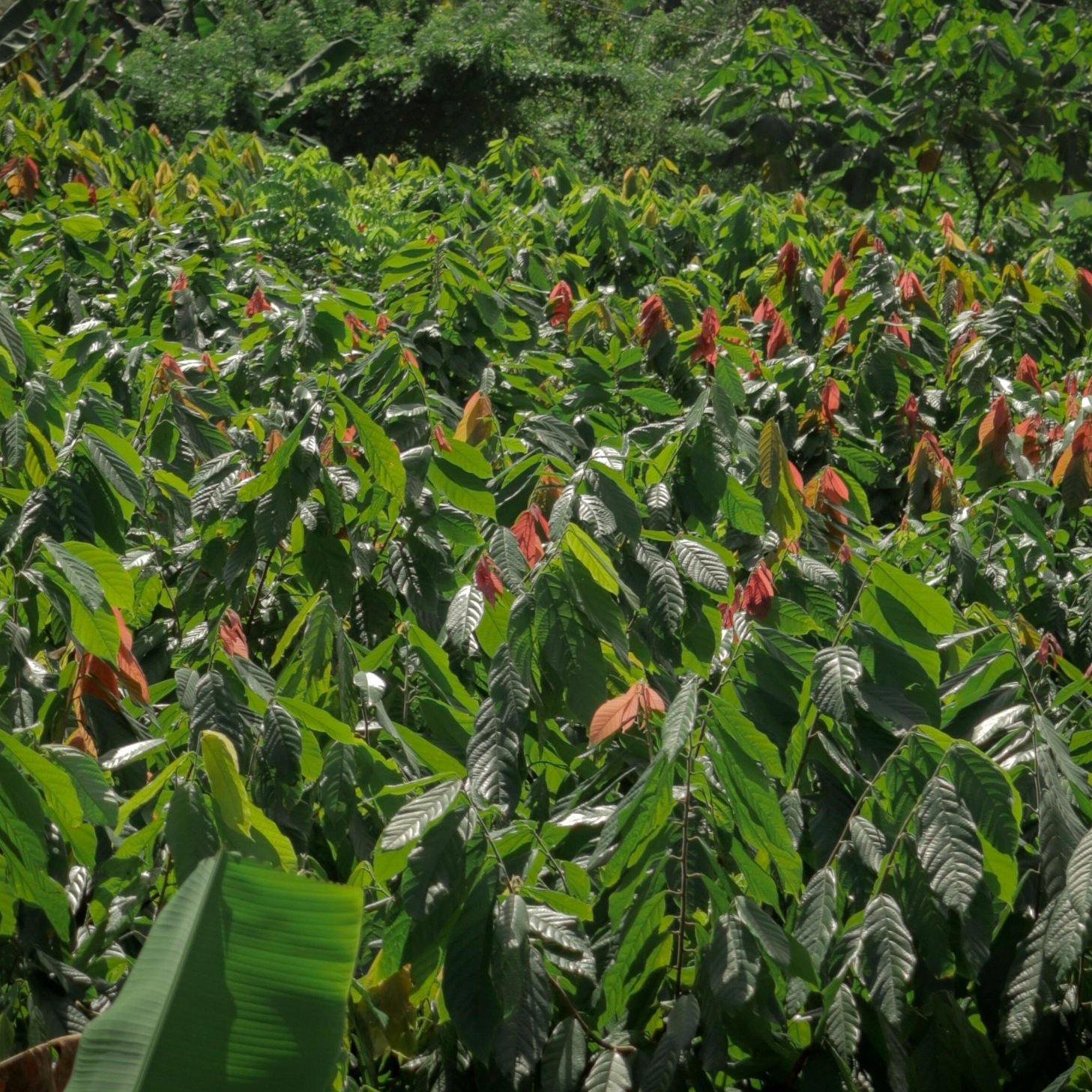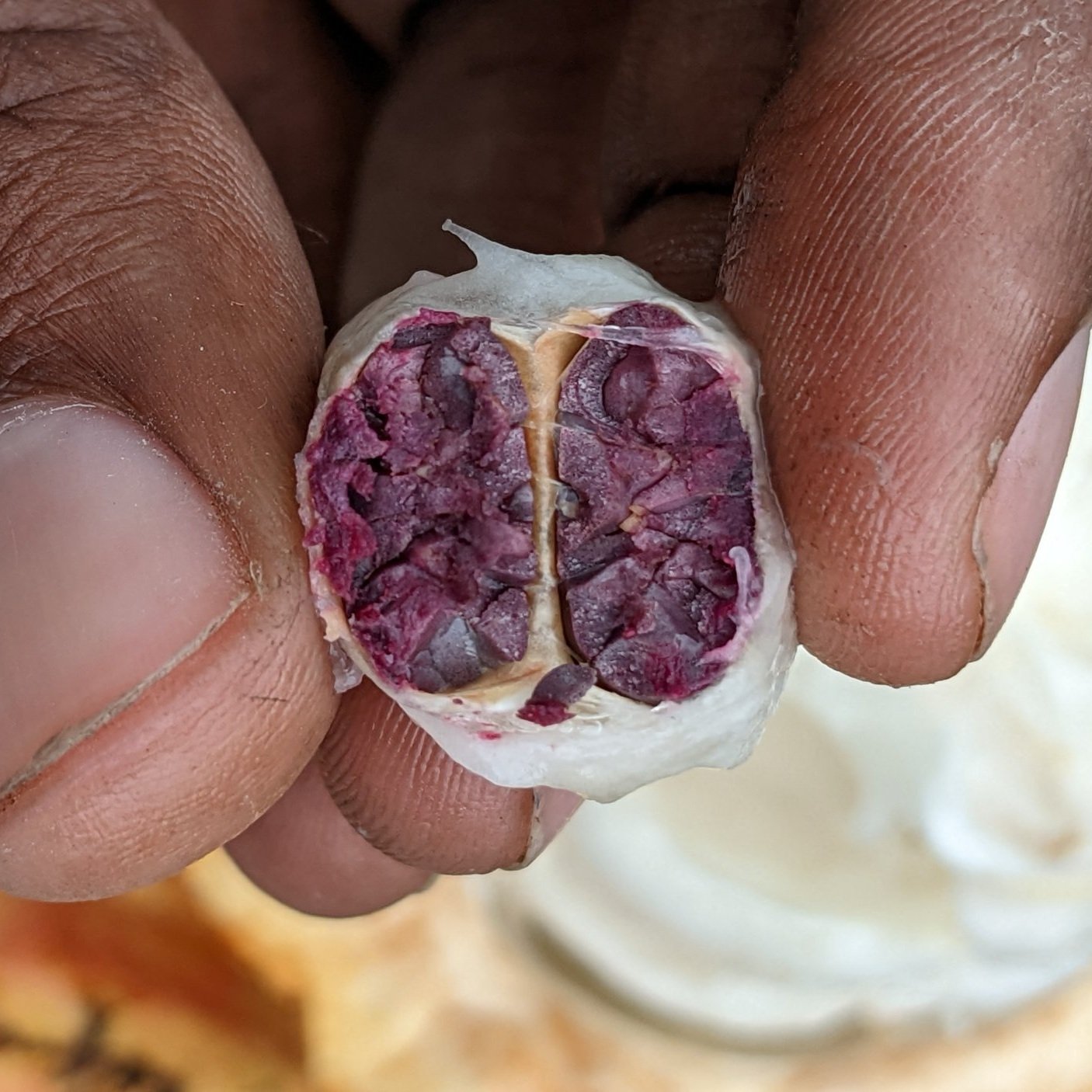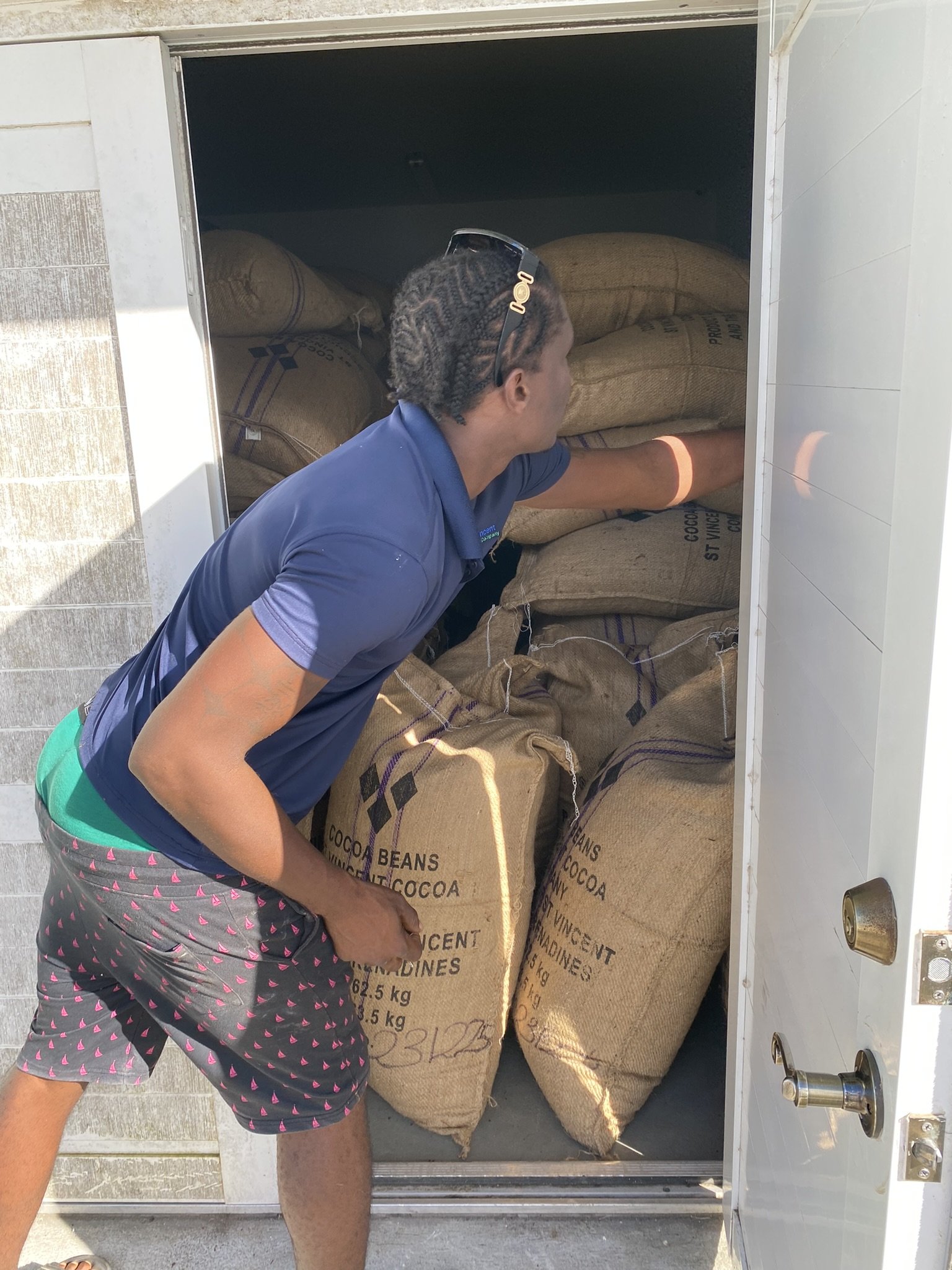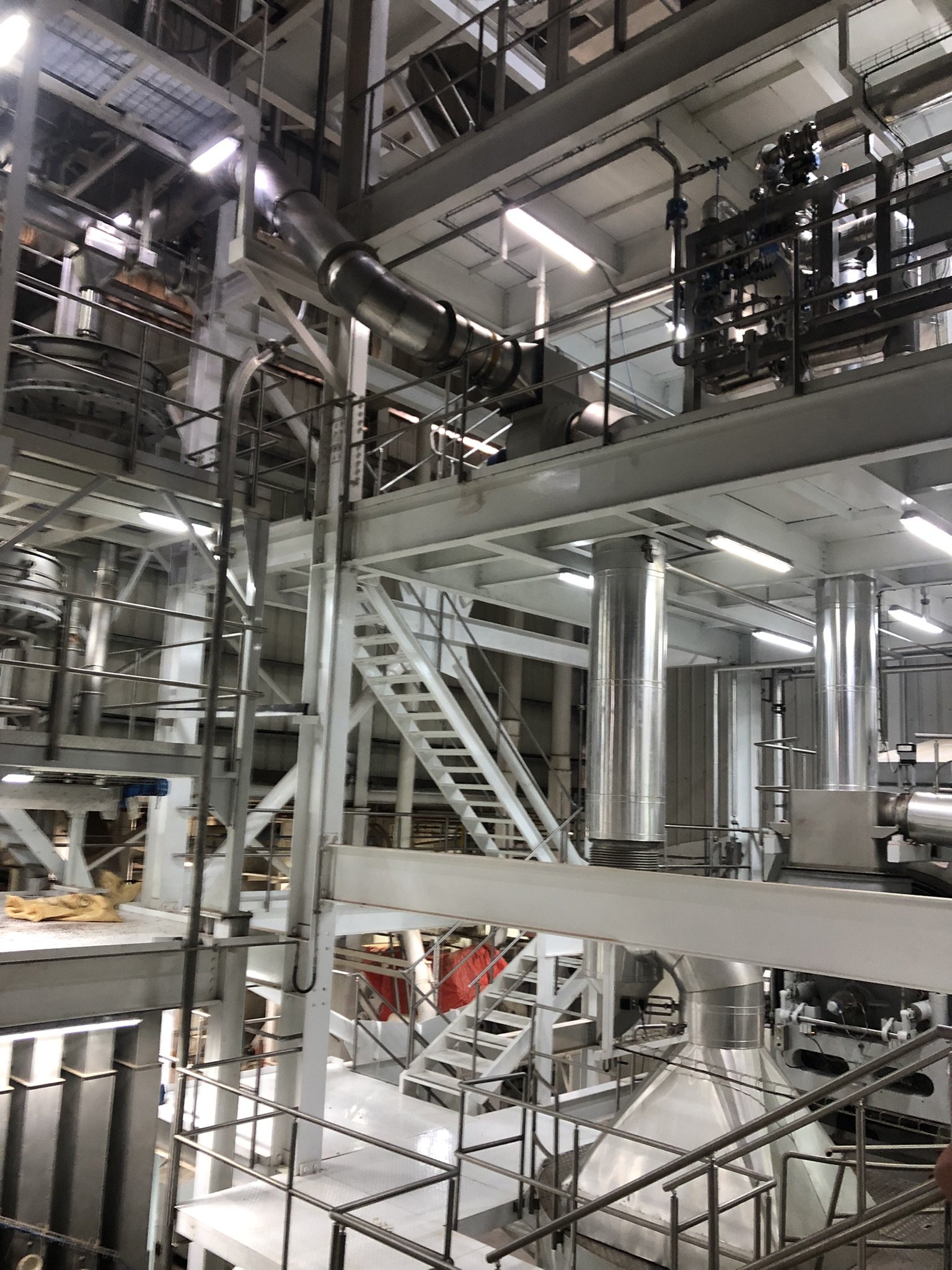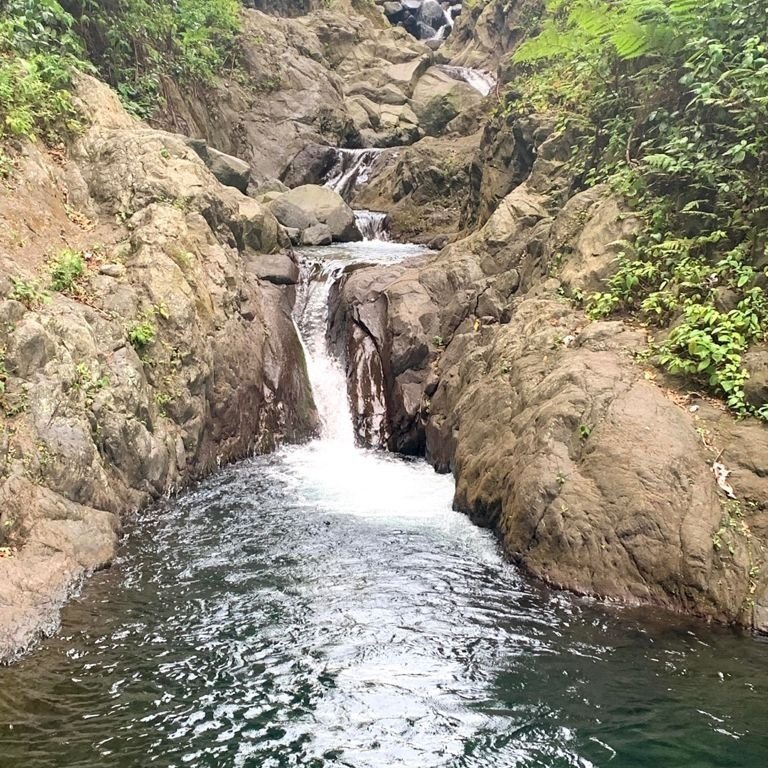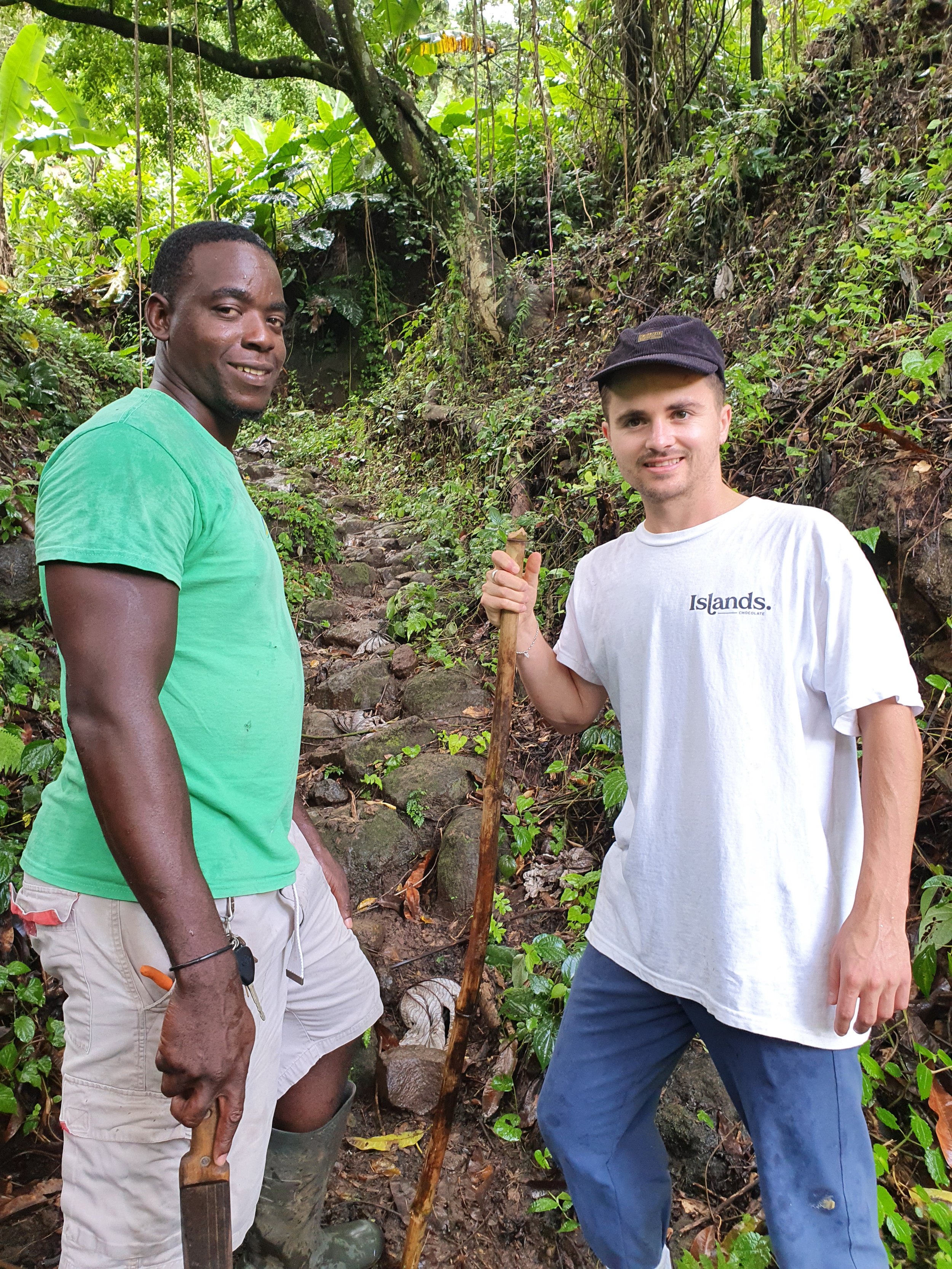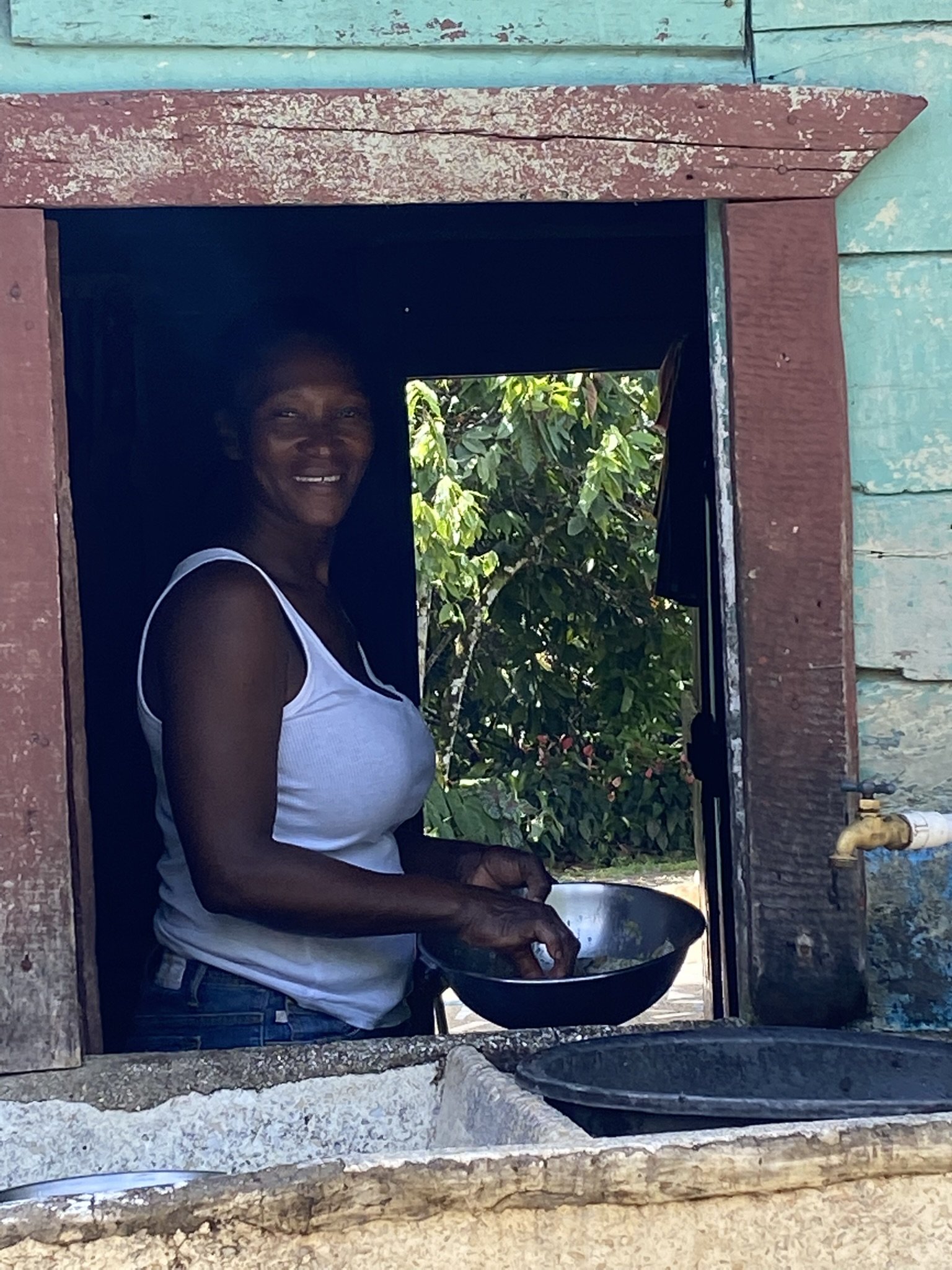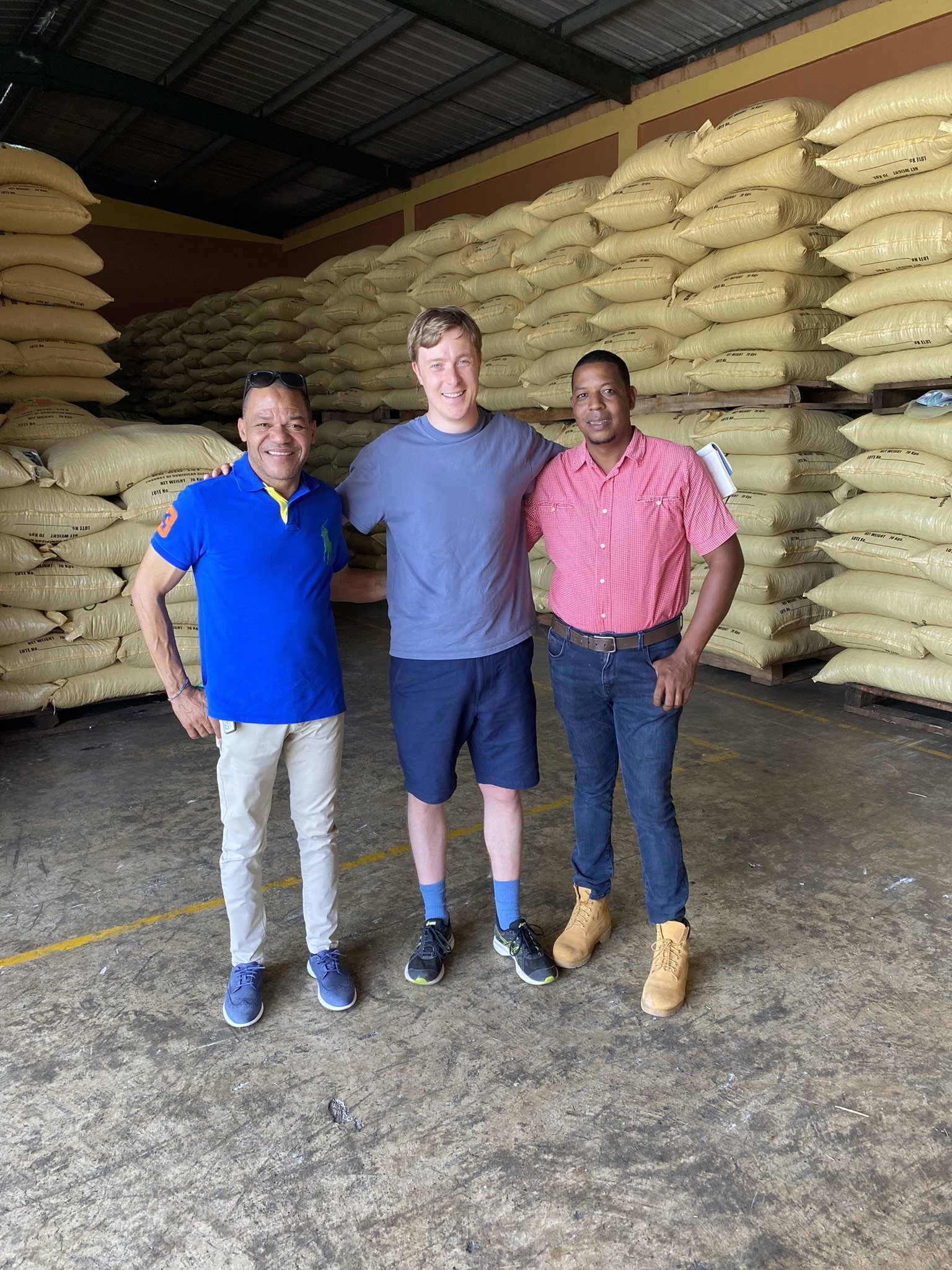The Islands Way
Cocoa
-
We use the finest flavour cocoa from two locations in the Caribbean - from our own farms in St Vincent & the Grenadines and our partner farms in the Dominican Republic.
Sounds standard? It’s not. Most cocoa comes from West Africa where it is bought by large multi-national companies via numerous traders to mass-produce industrial chocolate in massive factories. Traceability is opaque, environmental issues greenwashed and ethics sit a long way behind profit considerations, if at all. We sit in the exceedingly rare minority of the chocolate industry – not only do we know our product inside out and are able to trace it from start to finish, we also act as both cocoa farmers and chocolatiers, making a huge difference at source.
-
We started directly farming in St Vincent in 2011 and now have about 400 acres of cocoa and 100+ employees, working within an agroforestry system designed to both improve the flavour of the cocoa and also preserve the intricate natural ecosystems that exist on the island. Fortunately, the island offered perfect growing conditions for growing cocoa; nutrient rich volcanic soil, tropical climate, cool ocean winds and deep shaded valleys.
Because we need additional cocoa, more recently we have teamed up with a local farming collective and cocoa bean processor in the Dominican Republic. Through extensive on the ground research, we have been able to identify several kindred spirits with a matched commitment to flavour, practices and ethics. We work with them to produce exactly what we want – perfect beans for pressing into cocoa powder (for use in hot chocolate powder) and cocoa butter (for use in our chocolate).
-
Cocoa is a delicate and highly sensitive plant, especially when young. Originating from the Amazon rainforest, it requires high rainfall (at least 60 inches) and temperatures (around 25-30℃) to grow, as well as an overstorey of trees to offer shade and protection from too much sun and wind damage. Because of this, they can only flourish in a narrow band of 20 either side of the equator.
Being in a rainforest environment, vegetation grown extremely quickly, including weeds which are a constant battle, especially in the early years after planting and disease (mainly fungus) a constant threat. Farms need constant attention and so do the trees themselves; continual pruning ensures trees maintain shape to maximise pod production and disease is kept to a minimum.
-
Cocoa trees bear fruit early but take seven years to fully mature. Whilst harvesting takes place all year round in St Vincent, it is restricted to two main seasons in Dominican Republic. When harvested, each cocoa pod is individually hand cut from the tree. This level of care is needed to ensure the flower cushion (where the pod grows) remains undamaged and will continue to yield pods in years to come. Pods are ‘cracked’ in situ to remove the beans and pulp both to reduce bulk transport and enable us to leave the husks to add to the vegetative matter in the field.
-
The pulp then is taken to our central fermentation and drying facility in St Vincent and in DR, to one of the facilities of the two partners we work with. It is then loaded by hand into a cascade fermentory (three or four large wooden boxes arranged in a ‘cascade’ fashion to enable beans to be moved easily from one to the other) to begin the fermentation process.
Raw cacao beans have a high phenolic content, which contributes to their astringency and provides the purple colour. Fermentation is an essential part of turning raw cacao into delicious chocolate by contributing to the development of flavour and reducing this inherent acidity of the final product. It is a two-stage process (first anaerobic then aerobic) with essential microbes and yeasts fermenting the white pulp surrounding the cacao beans and allowing the enzymatic breakdown of proteins and carbohydrates inside the beans themselves, generating flavour development.
This process generates significant heat (more than 40 C) which is maintained by the introduction of more oxygen as the cacao is moved from box to box. This combination of intense heat and the diffusion of ethanol and acetic acid into the cacao beans breaks down the cell walls, becoming a venue for the chemical activities that develop the intense flavour associated with chocolate.
-
After fermentation, cocoa is dried in solar drying facilities, before being bagged up ready to ship. In St Vincent, a sample of every batch making up a consignment is assessed in our chocolate kitchen in Kingstown for quality testing as a finished chocolate and in both SVG and DR the fermentations are assessed by a ‘cut test’.
CRaft
-
Our cocoa is shipped directly from both SVG and DR to our renowned artisan chocolatiers in Belgium and Switzerland.
Because our beans are such good quality with a high Criollo content, they only need a light roasting which retains flavour and valuable flavonoids. After roasting, beans are ‘winnowed’ which is the process of removing the outer shell of the bean and breaking the bean down into nibs – effectively the seed kernel. These nibs are then ground to a ‘liquor’, effectively a thick paste of pure cocoa.
This liquor is ‘conched’ – a continual grinding and mixing of the liquor in a large drum with the ensuing friction producing high temperatures. It is at this stage any additional cocoa butter, sugar and milk powder (if making milk chocolate) are added. Conching helps to evaporate any remaining moisture and acidity as well as refine the particle size down to 15-25 microns - undetectable on the human tongue and creating the iconic smooth chocolate texture.
Because our cocoa is of the highest quality, we want to retain as much of the natural flavours of the cocoa as possible and therefore, conch for an incredibly short amount of time when compared with the industry standard.
Once the flavour and texture is right, the chocolate is then tempered, molded into buttons and packed.
-
All our powders are currently produced from our DR cocoa. From here it is shipped to our pressing agent in Holland. Here it goes through the same initial process of roasting and winnowing to produce a liquor but thereafter the process is different. Liquor is pressed gradually over a period of several hours under huge pressure which separates the liquor into powder and butter (approximately 53% and 47% respectively). This cocoa powder ‘cake’ is then pulverised in a machine to break it up into a loose powder.
This powder is shipped to us in the UK where it is either packed as a pure 100% cocoa powder or directed to our blenders to mix with sugar to create our Hot Chocolate Powder.
Crucially, our powder stays ‘Natural’ and is not ‘Dutched’. Dutching is a process of washing the cocoa with an alkalising solution of potassium carbonate to reduce the acidity and produce a darker, more chocolatey looking powder and is standard in most industrial hot chocolate. Whilst this process does create a more uniform flavour and reduce acidity, it also means losing some of the natural flavours as well as many of the natural flavanols of the cocoa and is arguably necessary when using poor quality cocoa.
Fortunately, our clients and their customers want and expect better.
-
The butter produced from pressing our beans is yet another fundamental difference between Islands and practically every other chocolatier on the planet.
Firstly, we use the cocoa butter produced from our own beans in all of our chocolate.
Secondly, just like our powder, we keep our butter ‘Natural’. Most butter is made from poor quality beans, often infested with mould and insects and with associated off flavours. These off-flavours are transferred into the butter produced so it is invariably ‘deodorised’ – a chemical and physical process of extracting all flavours (good and bad) to produce a homogenised tasteless product, effectively an additive. Whereas because of the exceptional quality of our beans, the butter produced has a lovely mild cocoa flavour and this enhances the taste of our chocolates, especially our white chocolate.
CONSCIENCE
-
St Vincent
The cocoa industry is still relatively new to St Vincent. It was only in 2011 that organized farming was established by our sister company, St Vincent Cocoa Company (SVCC). Prior to this, only a handful of cocoa farms grew largely unmanaged dating back to the 1950s. There was a wealth of nutrient rich, unused farmland remnant from a once thriving banana trade which crashed in the 1980's due to the EU's removal of the UK's tariff-free trade, meaning a new agricultural industry could thrive without deforesting and provide a valuable contribution to the local economy.
SVCC now employs 150 Vincentians making us the largest agricultural employer on the island. All employees have contracts and are paid wages above the Government guidelines and far higher than Fairtrade recommendations, together with NIS contributions, holiday pay etc. We have put in place, from scratch, a fully functioning industry including an office, chocolate factory (operating in SVCC only), plant nursery, cocoa processing plant and gene bank. Cocoa is giving this sector hope as well as a boost in real terms as not only do we employ a large number of people and therefore support their families, by extension we also support many others, such as our suppliers, professional advisors and government agencies.
Over the years our small-works team have helped with improving local schools, facilities and infrastructure where our farms are located. Most recently, we installed a new IT suite in the school local to our plant
nursery in Georgetown.
Dominican Republic
The Dominican Republic is the largest producer of sustainable organic cacao in the world and because of its proximity to us in St Vincent, its excellent quality cacao of similar genetics and flavour profile to ours and together with its emphasis on sustainability certifications, it is uniquely positioned to have a significant impact on farmers’ livelihoods and conservation. For this reason, we have decided to source from here to augment our St. Vincent supply.
We have selected to work with two local producers; one a leading eco-enterprise with cacao at the heart of a much larger forest reserve and wildlife program, the other a larger scale co-operative at the very heart of the cocoa industry and owned by its farmers. Both are situated in the Cibao valley, which is the heart of the Dominican Republic’s cocoa producing region.
Our choice of partners (and in particular our smaller partner) reflect our commitment to the ecosystems that nurture the farms’ cacao trees and their dedication to studying and practicing natural fermentation and drying techniques to elicit the finest flavours in each bean. And because of our close relationships with them, using our own knowledge as farmers together with feedback from our clients at Islands, we are able to influence our sourcing and production methods to produce exactly what we are looking for. In this respect, our agronomist we employ in SVG has recently been to visit our DR partners to ensure best practices in line with our own.
-
St Vincent
Our rates of pay are higher than the Government's minimum levels and are far higher than Fairtrade's recommended rates. Our employees are also offered the opportunity of increased pay and career advancement within the company.
The price we pay our independent farmers for their wet cocoa is significantly higher than Fairtrade's recommended rates for the equivalent dry cocoa, and this is without the additional time, hassle and investment necessary to dry and ferment.
We work closely with the government to ensure that our cocoa farms comply with the highest ethical standards on the island and in 2022 we committed to a voluntary assessment by the Bureau of Standards in St Vincent. This extensive assessment was conducted over a nine-month period and certified that the St Vincent Cocoa company operates in an 'environmentally and socially responsible manner' and that the practices 'meet the requirements for environmental conservation, gender equality, labour and fair pay for workers including policy for the prohibition of child labour.'
Dominican Republic
The cacao industry in DR is very well-established and regulated by the government. Moreover, the organic certification process is very stringent during which employee pay and conditions are also assessed. In addition to higher wages for its staff, our smaller partner also provides additional employment opportunities such as profit sharing and several international exchanges. Frequent farmer trainings workshops take place with our nominated 37 cocoa producers, focusing on best practices related to sustainable agriculture practices, pruning, post-harvest processing, logistics, and chocolate flavour profiles.
Whilst both partners have close relationships with the farmers from whom they buy wet cacao, often providing take-off contracts and advance payments both to help farmers through the leaner inter-harvest periods as well as to ensure supply, there is in fact a very healthy and competitive open market for cacao and especially so during the current period of much higher cocoa process. With no shortage of buyers, cocoa is sold wet on average around 85% of the equivalent world dry price plus a $300/MT organic premium, which, at the current ICE price of $3,650/MT is the equivalent of $3,400/MT. On the face of it, this looks lower, but does not take into account the additional cost of shipping to New York / London inherent in the world price (approx. $200/MT), the significant time, cost and hassle of processing wet cacao into dry and bagged beans (approx. $400-550/MT) and also, very significantly, farmers get paid immediately as opposed to sometime later (worth say $100/MT) and lastly, they get 100% of the wet cacao price paid to them direct as opposed only a percentage of the dry price as it has to go through the hands of around 5 to 7 middle-men to end up at the ICE price (say 25-50% discount = $900-1,800). Taken together, our DR farmers achieve at least double if not three times the price of their equivalent in Africa, the main source of cocoa.
-
All of our clients are welcome and encouraged to visit any of our farms or facilities in St Vincent and / or Dominican Republic to fully understand and see the integrity of our cocoa supply chain for themselves.
In both cases, every batch and consignment is accompanied by a full traceability report detailing when and where the wet cacao came from with receipts and GPS locations, it’s fermentation, drying and storage data, evidence of what was paid and to whom in the form of contracts and bank transfers, photos of the individual farmers if relevant, cut and sieving tests and bean evaluation details, together with all the shipping documents.
Alongside this, we have prepared a very detailed comprehensive Impact Assessment Report which outlines each stage of our supply chain. A concise version of this is available to all here and the full document available to relevant parties on request.
-
St Vincent
We work closely with the government to ensure that our cocoa farms comply with the highest ethical standards on the island and in 2022 we committed to a voluntary assessment by the Bureau of Standards in St Vincent. This extensive assessment was conducted over a nine month period and certified that The St Vincent Cocoa company operates in an ‘environmentally and socially responsible manner’ and that the practices ‘meet the requirements for environmental conservation, gender equality, labour and fair pay for workers including policy for the prohibition of child labour.’ We have never come across an incidence of child labour on St Vincent.
Dominican Republic
The Dominican Republic has equally strict labour laws, including child labour protection mechanisms. We have personally visited many of the farms that supply us to see conditions for ourselves and are very confident that no child labour issues exist that we know of. However, it is early days and it will be some time before we can get around everywhere to be 100% certain.
What we can say for sure is that the DR cocoa industry is completely different to the relatively poor farmers in Africa, where very sadly the worst issues are. Being such good quality and organic certified which attracts a premium of $300/MT, farmers and their workers are very well off comparatively and have no need to use child labour, even if they could.
-
St Vincent
St Vincent is lush with tropical rainforests and preserving this rare and natural environment is at the heart of our agricultural practices. Our agricultural practices actively promote and preserve natural ecosystems with a comprehensive agroforestry system of indigenous trees such as mangoes, bananas and avocados and a new regenerative agriculture system designed to improve soil structures, reducing the need for additional fertilisers in the future.
All of our farms and their boundaries are GPS mapped and clearly outside of protected forest boundaries and water catchment areas. St Vincent has clearly defined forest boundaries which are monitored by a functional forestry department ensuring that no illegal farmland can be established in these areas. In any event, we have no need to expand into these areas with a wealth of unused farmland remnant from a once thriving banana trade. As a small country and community, any attempt by a farmer - ours or other - to cut protected rainforest would be immediately reported to the authorities within hours and the perpetrators would face severe penalties.
Dominican Republic
Deforestation is endemic in most cocoa growing countries and unfortunately DR is no exception; it has also suffered substantial deforestation over the years, albeit not on the same scale as West Africa. However, for a large part this is very much in the past, it has mostly taken place in the lowland Karst region and outside the more mountainous and forested areas where cacao is grown.
Poverty is directly linked to environmental degradation in these rural areas because deforestation and unsustainable farming practices. This weakens the soil structure meaning poorer crop yields leading to a vicious cycle of even more deforestation to compensate. Unfortunately, many people living in rural communities in DR live in poverty.
As already said, cocoa farms of the northern region are very different. Because they are predominantly fully mature – at least thirty years old, it would be very obvious indeed if any were a product of any recent deforestation. All farms we buy from are very well-established and as such the soils have been unfarmed by annual crops for many years, if ever. Being so old, the huge amount of leaf litter cocoa trees produce provides for a system of regenerative agriculture which ensures stable soil structures and reduces the need for chemical fertilizers; hence most are organic, even if not certified as such.
The farmers we partner with are instrumental in maintaining these wonderful cocoa farms, making a valuable contribution to slowing and hopefully even reversing deforestation nationally. Even so, deforestation is an ever-present threat, which is why on taking on any new farmer, we have in place a scheme whereby each farm is digitally assessed and if necessary, farmers commit to a program of forest regeneration.
-
St Vincent Cocoa & Chocolate
Once our cocoa has been fermented and dried, it is packed in the highest grade specialist food-safe plastic sacks which are essential to ensure that all impurities, moisture and contaminants are 100% excluded. These sacks are further placed in hessian sacks to provide an additional layer of protection to prevent the possibility of tearing.
Once the chocolate has been made, it is immediately packed on site into our end use packaging. These are then packed into reusable cardboard boxes before being shipped to our offices in London. These packaging boxes are then re-used by us to send out deliveries.
We are in the process of changing our packaging materials for our chocolate buttons in order to make them either home compostable OR fully recyclable. Our current Chocolate Button packaging is technically Type 7 recyclable, but unfortunately cannot yet be recycled in the UK due to a lack of facilities. The packaging needs to have a protective metalised inner layer to prevent fluctuations in temperature from damaging the chocolate which is why finding a truly recyclable option has proved difficult until recent advancements.
Dominican Republic Cocoa & Hot Chocolate Powder
Our Dominican Republic cocoa is packaged and shipped to the EU in the same plastic/hessian sacks as our St Vincent cocoa.
Once it is processed into cocoa powder at our facilities in Holland it is packed into a 25kg food-safe plastic film sack and placed into a protective card-paper blend sack. The inner plastic sack cannot yet be recycled due to the properties of the food-safe plastic film, but the outer card-paper sack is widely recycled.
This cocoa powder is then directed to our blenders, where once combined with sugar and salt, it is packed into our Hot Chocolate Powder tins. This tin is ‘forever recyclable’ and widely recycled across the world.

